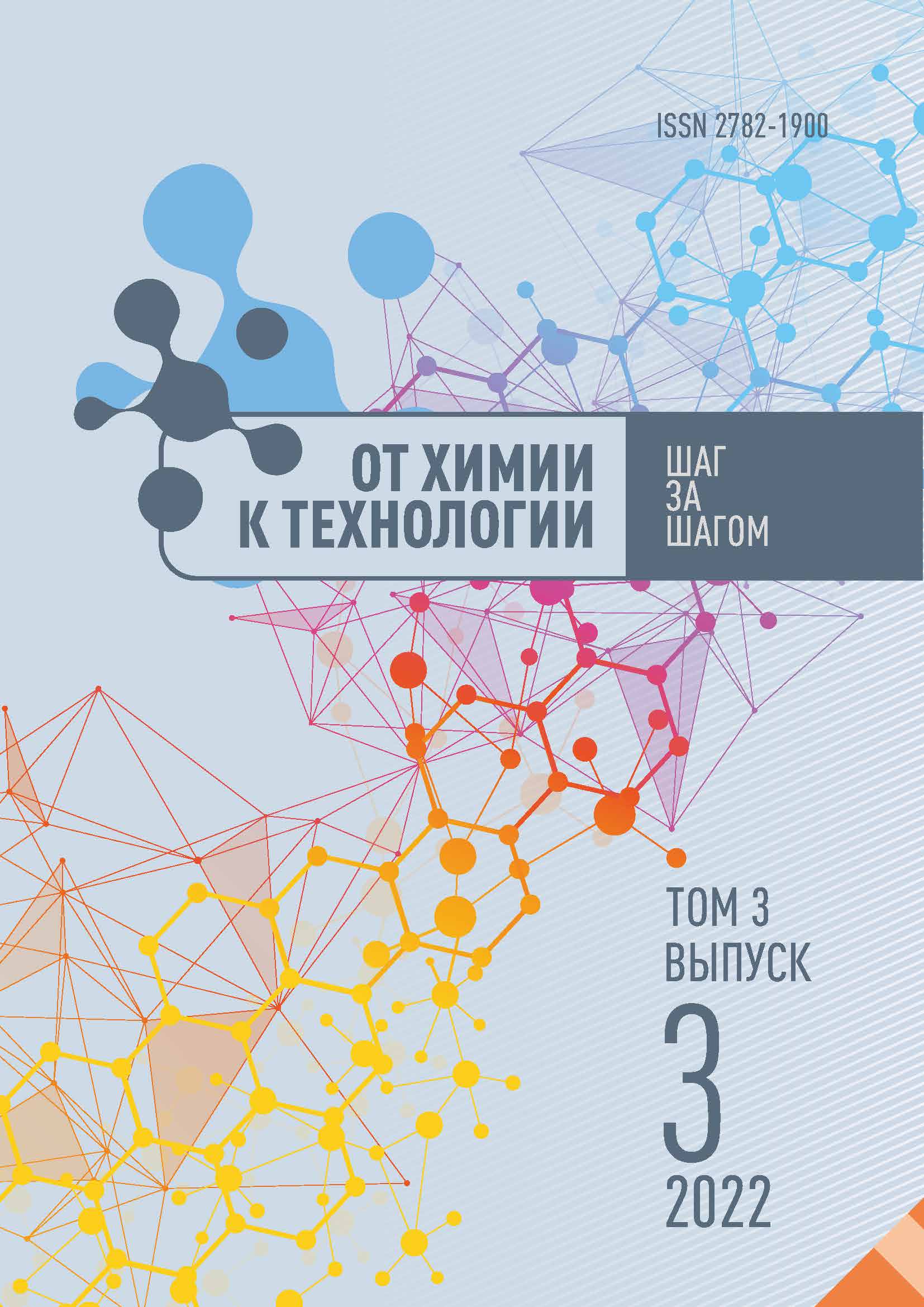Yaroslavl, Yaroslavl, Russian Federation
from 01.01.1974 until now
Yaroslavl, Yaroslavl, Russian Federation
Yaroslavl, Yaroslavl, Russian Federation
UDC 547.525.3
We studied the reaction mechanism of 5-aminosalicylic acid by carboxylation of 4 aminophenol, 4-acetylaminophenol and their sodium salts by interaction with carbon dioxide using the quantum density functional method. We calculated the changes in total electron energy and Gibbs free energy of the components as a result of the reaction and performed a multidimensional scan of the potential energy surface. The scan analyzed the change of total electron energy at different distances between the carbon atom in the carbon dioxide molecule and the carbon atom in the benzene ring to which the bonding takes place. We have shown that 4-aminophenol and 4-acetylaminophenol are not able to react as it is thermodynamically unfavourable. At the same time, the salts of 4-aminophenol and 4-acetylaminophenol are ready to reaction. The difference between using 4-aminophenol and 4-acetylaminophenol is not significant. This makes it possible to use 4-acetylaminophenol, which is more resistant to oxidation and less toxic, as a starting compound. We proposed a mechanism for the carboxylation of 4-acetylaminophenol salt based on a multidimensional scan of the potential energy surfaces of the reacting particles. In order to experimentally confirm the feasibility of this reaction we conducted a gas-phase catalytic carboxylation of sodium 4-acetylaminophenolate prepared in situ from 4 acetylaminophenol and sodium carbonate. We conducted the reaction at 190 oC for 2 hours at 3 MPa carbon dioxide pressure without using a solvent. The structure and purity of the 5 aminosalicylic acid obtained (47% yield) have been validated by various physico-chemical methods. This method for the synthesis of 5-aminosalicylic acid is prospective for industrial implementation.
carboxylation, 4-aminophenol, 4-acetylaminophenol, 5-aminosalicylic acid, mesalazine, thermodynamic functions, Gibbs free energy
1. Suerbaev, H.A., Seytenova, G.J. & Kanapieva, F.M. (2011) Anti-tuberculosis drug PASK (p-aminosalicylic acid), Vestnik KazNU. Seriya himicheskaya, 61(1), pp. 71-75 (in Russian).
2. Knyazev, O.V., Kagramanova, A.V. & Lishchinskaya, A.A. (2021) Evaluation of the therapy effectiveness of ulcerative colitis of moderate severity with mesalazine MMH, Medicinskij sovet, 5, pp. 113-123. DOI:https://doi.org/10.21518/2079-701X-2021-5-113-123 (in Russian).
3. Berends, S.E., Strik, A.S., Lowenberg, M., D’Haens, G.R., & Mathot, R.A.A. (2018) Clinical Pharmacokinetic and Pharmacodynamic Considerations in the Treatment of Ulcerative Colitis, Clinical Pharmacokinetics, 58(1), pp. 15-37. DOI:https://doi.org/10.1007/s40262-018-0676-z.
4. Sablin, O.A., Chernousova, V.V. & Komlev, A.D. (2021) Mesalazine-induced pneumonitis for the treatment of ulcerative colitis, Terapevticheskij arhiv, 93(2), pp. 199-203. DOI:https://doi.org/10.26442/00403660.2021.02.200618 (in Russian).
5. Klotz, U. (2012) The Pharmacological Profile and Clinical Use of Mesalazine (5-Aminosalicylic Acid), Arzneimittelforschung, 6(2), pp. 53-58. DOI:https://doi.org/10.1055/s-0031-1299685.
6. BNF 76 (British national formulary) (2018) London: Pharm. Press.
7. Mikheev, V.V., Mironov, M.M. & Abdullina, V.H. (2009) Chemistry of colorants and coating. Kazan’: Izdatel’stvo Kazan. gos. teckhnol. universiteta (in Russian).
8. Harveer, K. & Jasmeen, S. (2014) Synthesis, characterization and radical scavenging activity of aromatic amine conjugates of 5-aminosalicylic acid, Bulletin of the Chemical Society of Ethiopia, 28(3), pp. 475-480. DOI:https://doi.org/10.4314/bcse.v28i3.17.
9. Basu Baul, T.S., Manne, R. & Tiekink, E.R.T. (2019) Mono- and di-anionic coordination modes of arylazosalicylates in their bis(ƞ5-cyclopentadienyl)titanium(IV) complexes: Syntheses and crystal structures, Inorganica Chimica Acta, 484, pp. 469-480. DOI:https://doi.org/10.1016/j.ica.2018.09.076.
10. Gusev, V.Y., Baigacheva, E.V. & Gogolishvili, V.O. (2019) Azo Derivatives of Pyrocatechol, Resorcinol, and Salicylic Acid as Collectors for Sulfide Ore Flotation, Russian Journal of Applied Chemistry, 92(12), pp. 1734 1744. DOI:https://doi.org/10.1134/s1070427219120150.
11. Sana, S., Tasneem, Ali M.M., Rajanna, K.C. & Saiprakash, P.K. (2009) Efficient and Facile Method for the Nitration of Aromatic Compounds by Nitric Acid in Micellar Media, Synthetic Communications, 39(16), pp. 2949–2953. DOI:https://doi.org/10.1080/00397910802711318.
12. Natarajan, P., Chaudhary, R., Rani, N., Sakshi & Venugopalan, P. (2020) 3-(Ethoxycarbonyl)-1-(5-methyl-5-(nitrosooxy)hexyl)pyridin-1-ium cation: A green alternative to tert-butyl nitrite for synthesis of nitro-group-containing arenes and drugs at room temperature, Tetrahedron Letters, 61(3), p. 151529. DOI:https://doi.org/10.1016/j.tetlet.2019.151529.
13. Agharbaoui, F.E., Hoyte, A.C., Ferro, S., Gitto, R., Buemi, M.R., Fuchs, J.R., Kvaratskhelia, M. & Luca, L.D. (2016) Computational and synthetic approaches for developing Lavendustin B derivatives as allosteric inhibitors of HIV-1 integrase, European Journal of Medical Chemistry, 123, pp. 673–683. DOI:https://doi.org/10.1016/j.ejmech.2016.07.0.
14. Kalbasi, R.J., Massah, A.R., Zamani, F. & Javaherian Naghash, H. (2010) Fast and Efficient Nitration of Salicylic Acid and Some Other Aromatic Compounds over H3PO4/TiO2-ZrO2 Using Nitric Acid, Chinese Journal of Chemistry, 28(3). pp. 397–403. DOI:https://doi.org/10.1002/cjoc.201090086.
15. Kirimura, K., Gunji, H., Wakayama, R., Hattori, T. & Ishii, Y. (2010) Enzymatic Kolbe–Schmitt reaction to form salicylic acid from phenol: Enzymatic characterization and gene identification of a novel enzyme, Trichosporon moniliiforme salicylic acid decarboxylase, Biochemical and Biophysical Research Communications, 394(2), pp. 279–284. DOI:https://doi.org/10.1016/j.bbrc.2010.02.154.
16. Abe, K., Nakada, A., Matsumoto, T., Uchijyo, D., Mori, H. & Chang, H.C. (2021) Functional Group-Directed Photochemical Reactions of Aromatic Alcohols, Amines, and Thiols Triggered by Excited-State Hydrogen Detachment: Additive-free Oligomerization, Disulfidation, and C(sp2)–H Carboxylation with CO2, Journal of Organic Chemistry, 86(1), pp. 959-969. DOI:https://doi.org/10.1021/acs.joc.0c02456.
17. Gu, M., Yan, X. & Cheng, Z. (2016) Hybrid catalytic effects of K2CO3 on the synthesis of salicylic acid from carboxylation of phenol with CO2, Research on Chemical Intermediates, 42(2), pp. 391-406. DOI:https://doi.org/10.1007/s11164-015-2025-2.
18. Ienaga, S., Kosaka, S., Honda, Y., Ishii, Y. & Kirimura, K. (2013) p-Aminosalicylic Acid Production by Enzymatic Kolbe–Schmitt Reaction Using Salicylic Acid Decarboxylases Improved through Site-Directed Mutagenesis, Bulletin of the Chemical Society of Japan, 86(5), pp. 628–634. DOI:https://doi.org/10.1246/bcsj.20130006.
19. Lue, H., Liu, J., Xing, C., Tan, M. & Gao, F. (2011) Synthesis of 5-Aminosalicylic Acid using Kolbe-Schmidt Reaction Under Supercritical Conditions, Asian Journal of Chemistry, 23(9), pp. 3819-3823.
20. Neese, F. (2012) The ORCA program system, Wiley Interdisciplinary Reviews: Computational Molecular Science, 2(1), pp. 73–78. DOI:https://doi.org/10.1002/wcms.81.
21. Neese, F., Wennmohs, F., Hansen, A. & Becker, U. (2008) Efficient, approximate and parallel Hartree–Fock and hybrid DFT calculations. A “chain-of-spheres” algorithm for the Hartree–Fock exchange, Chemical Physics, 356(1-3), pp. 98–109. DOI:https://doi.org/10.1016/j.chemphys.2008.10.036.
22. Ovchinnikov, K.L. Starostin, M.V. & Larionov, N.N. (2021) Quantum-chemical study of the regioselectivity of the Diels-Alder heteroreaction of α,β-unsaturated thiocar- bonyl compounds with Unsymmetrical dienophiles, From Chemistry Towards Technology Step-By-Step, 2(3), pp. 56-60. DOI:https://doi.org/10.52957/27821900_2021_03_56 [online]. Available at: http://chemintech.ru/index.php/tor/2021-2-3
23. Levine, I.N. (2009) Physical Chemistry. 6th Ed. New York: McGrawHill.








